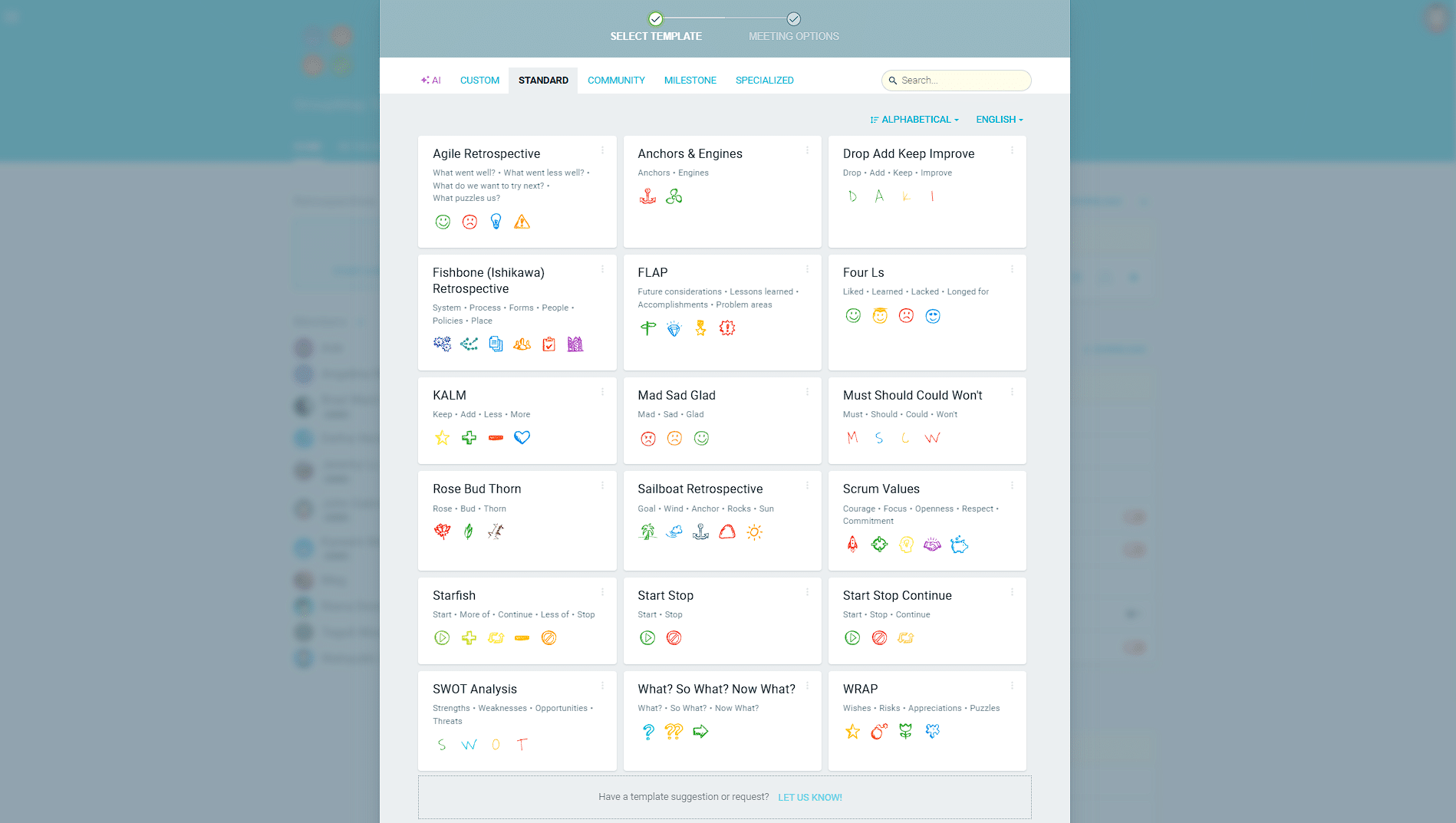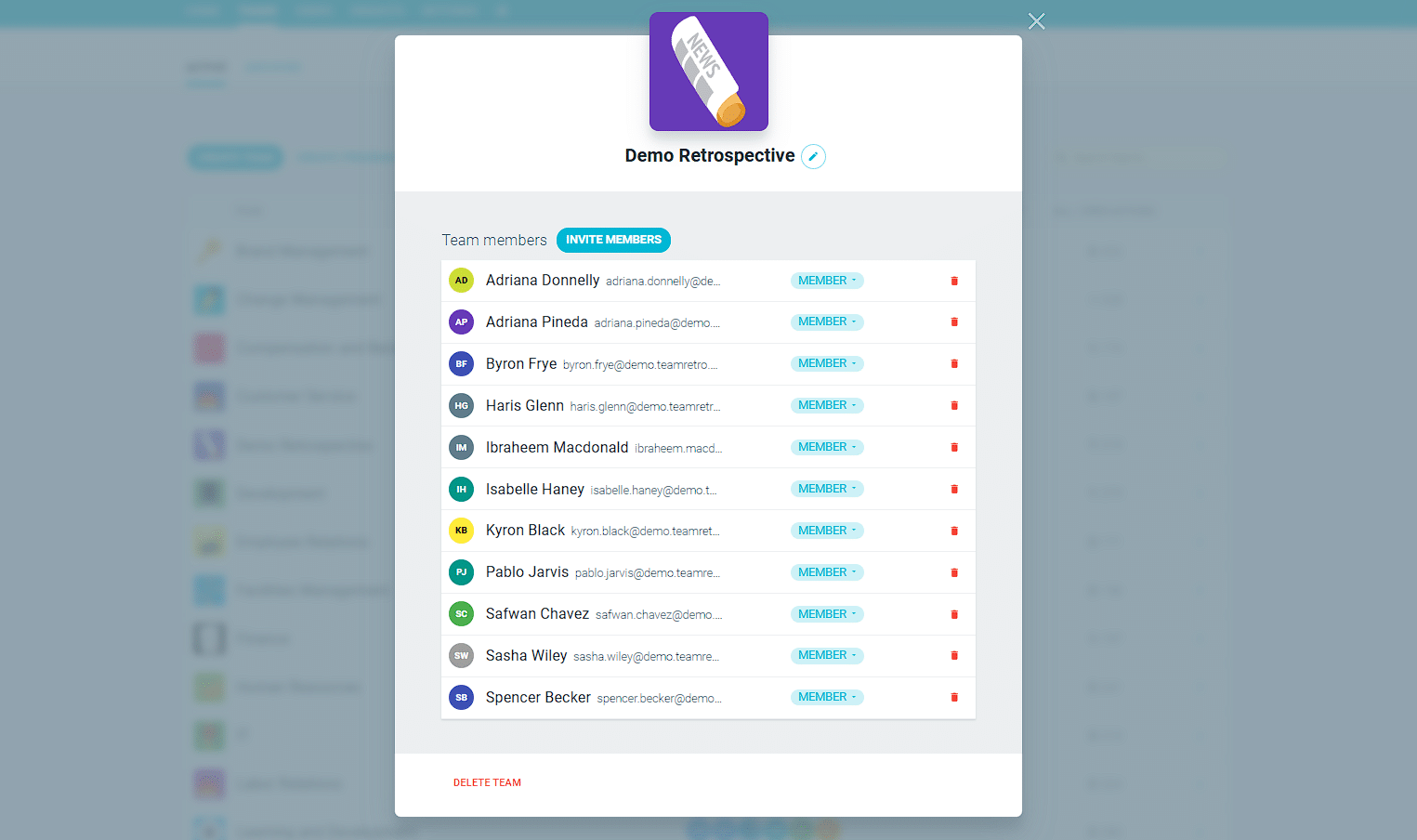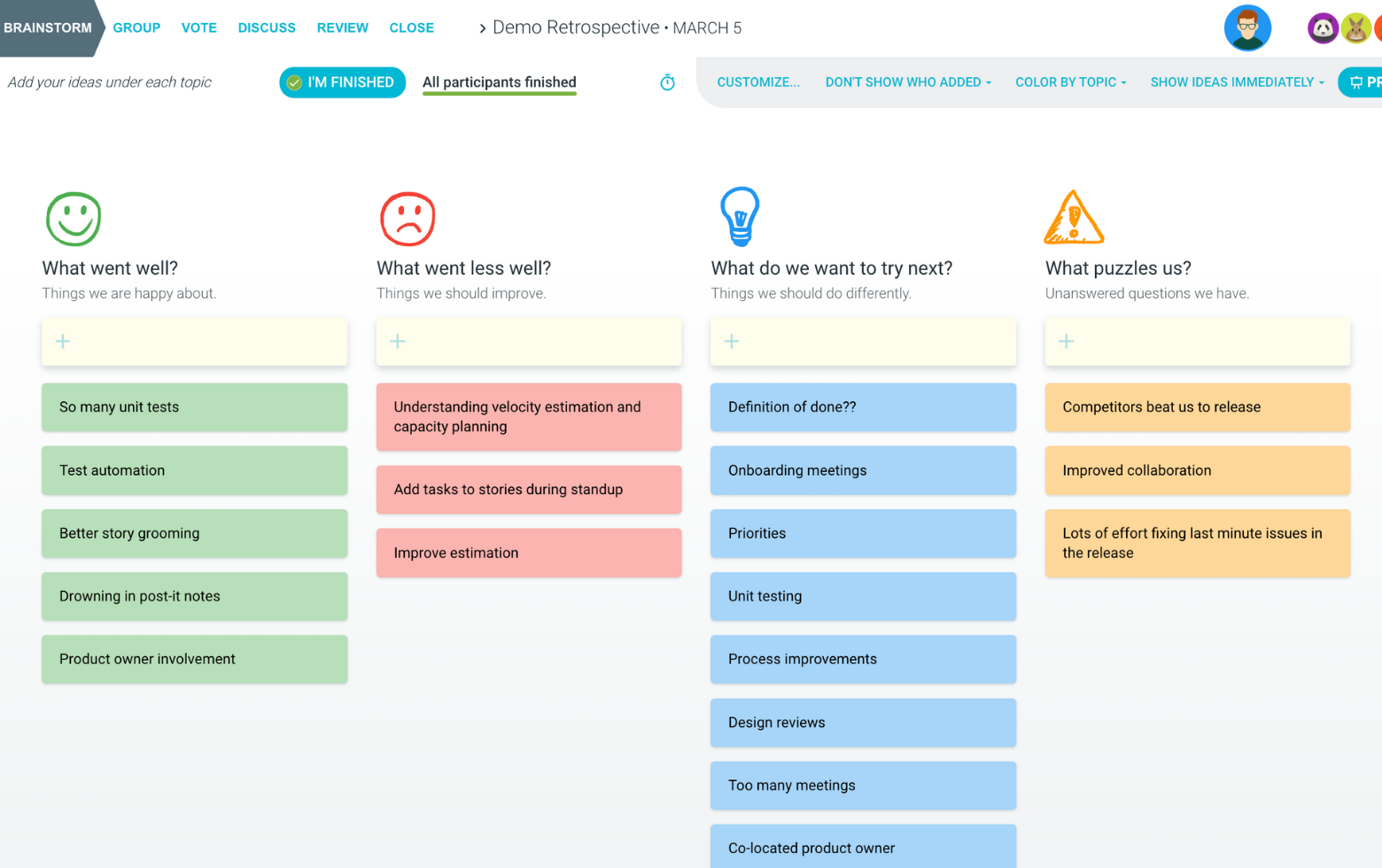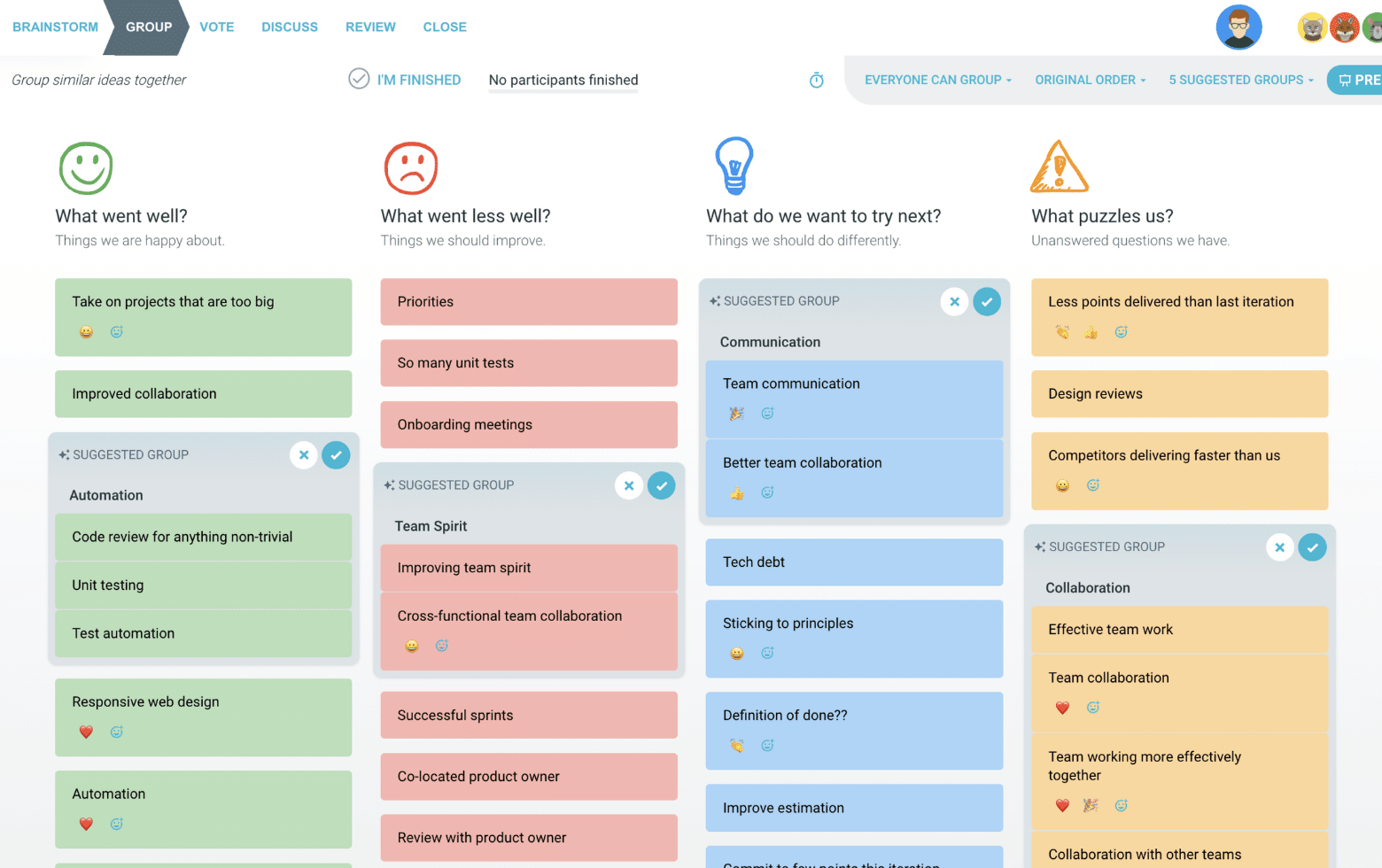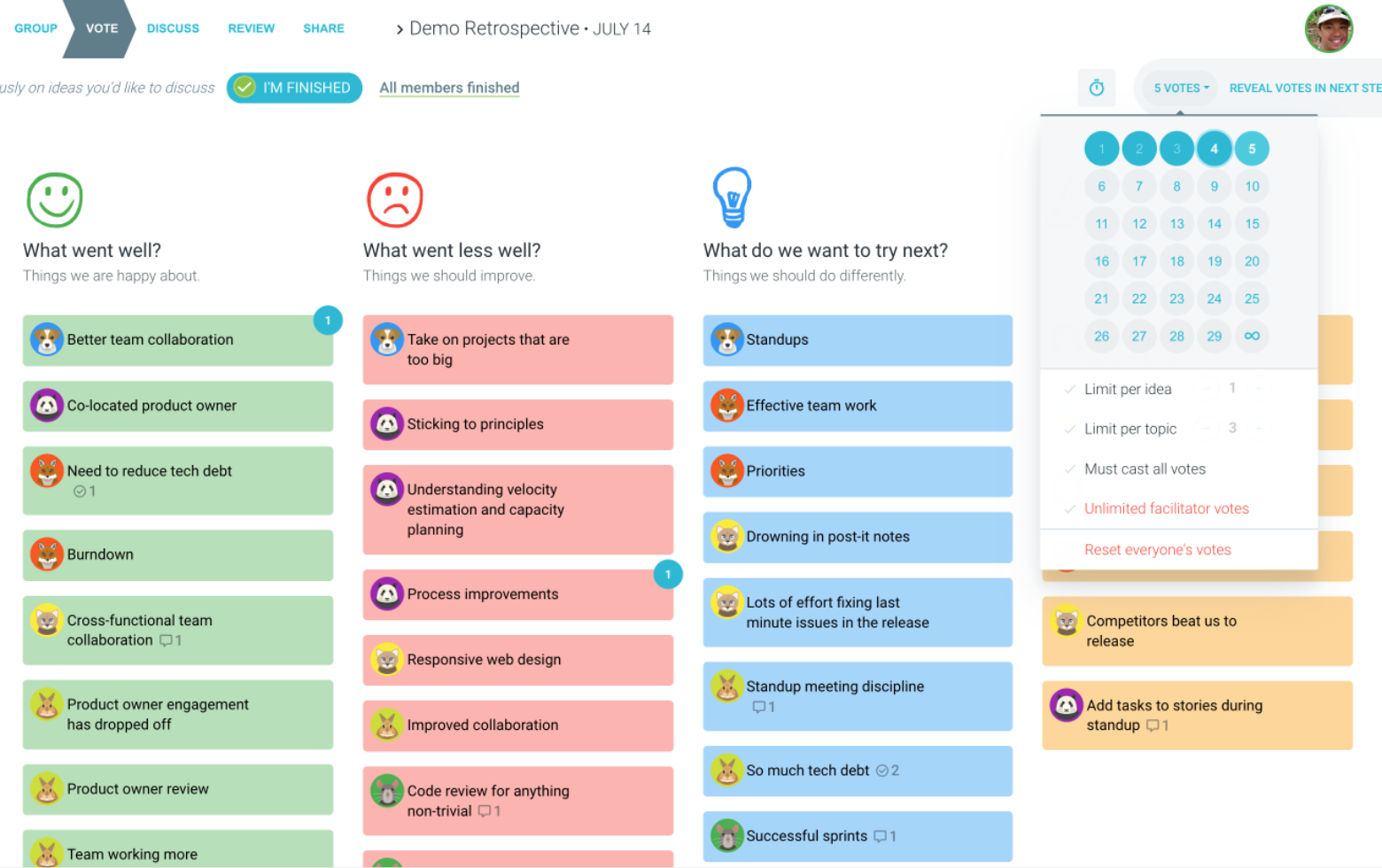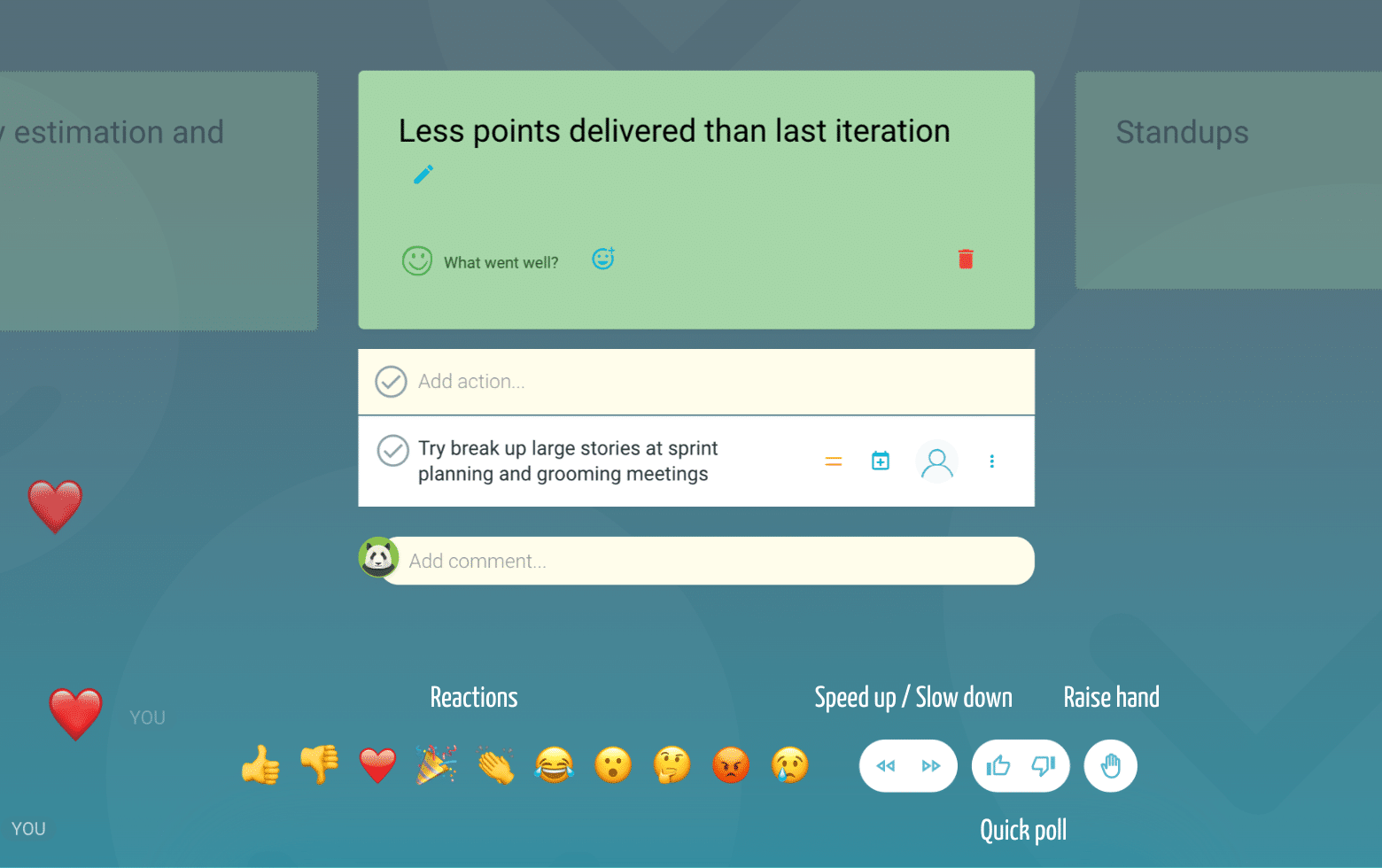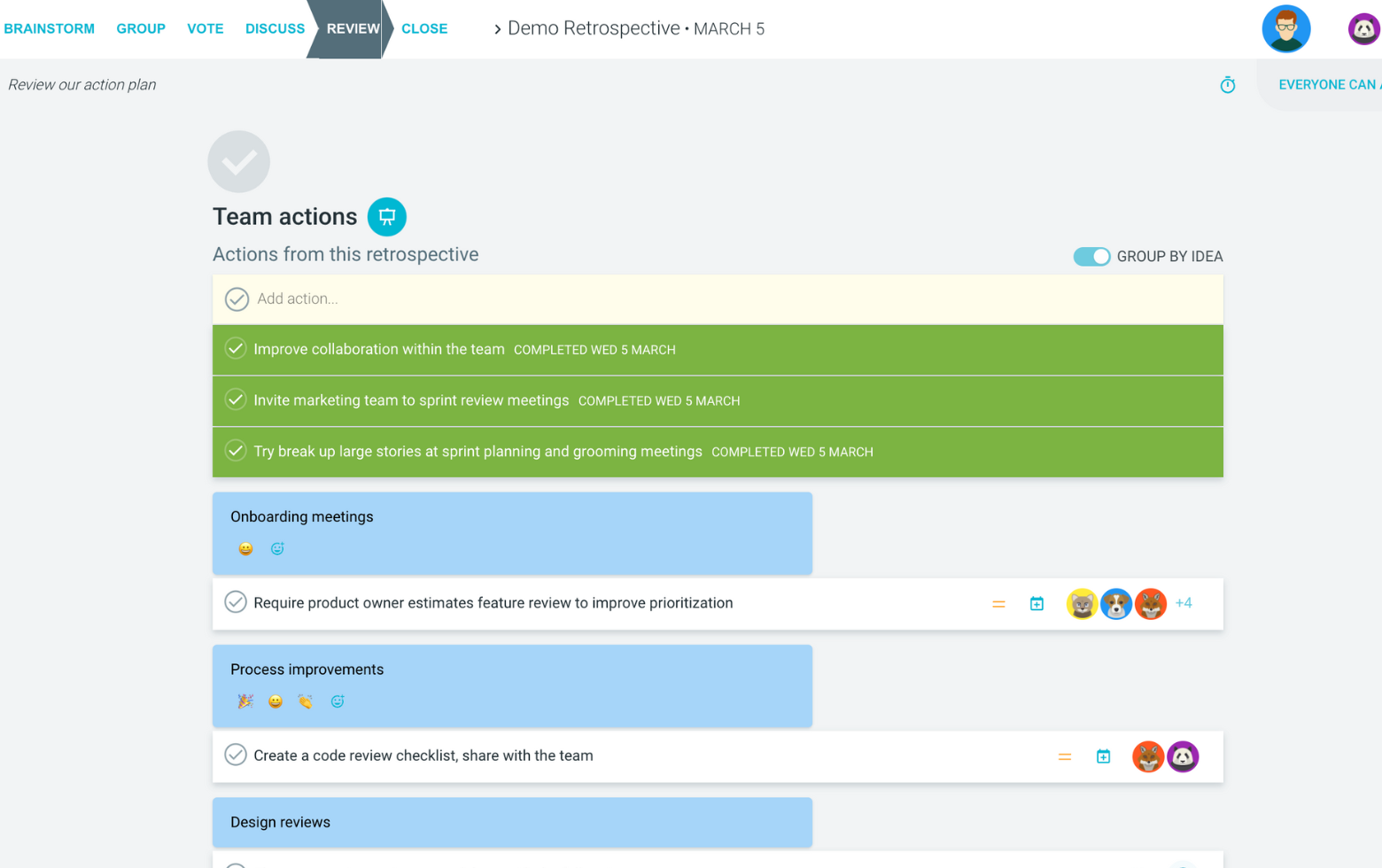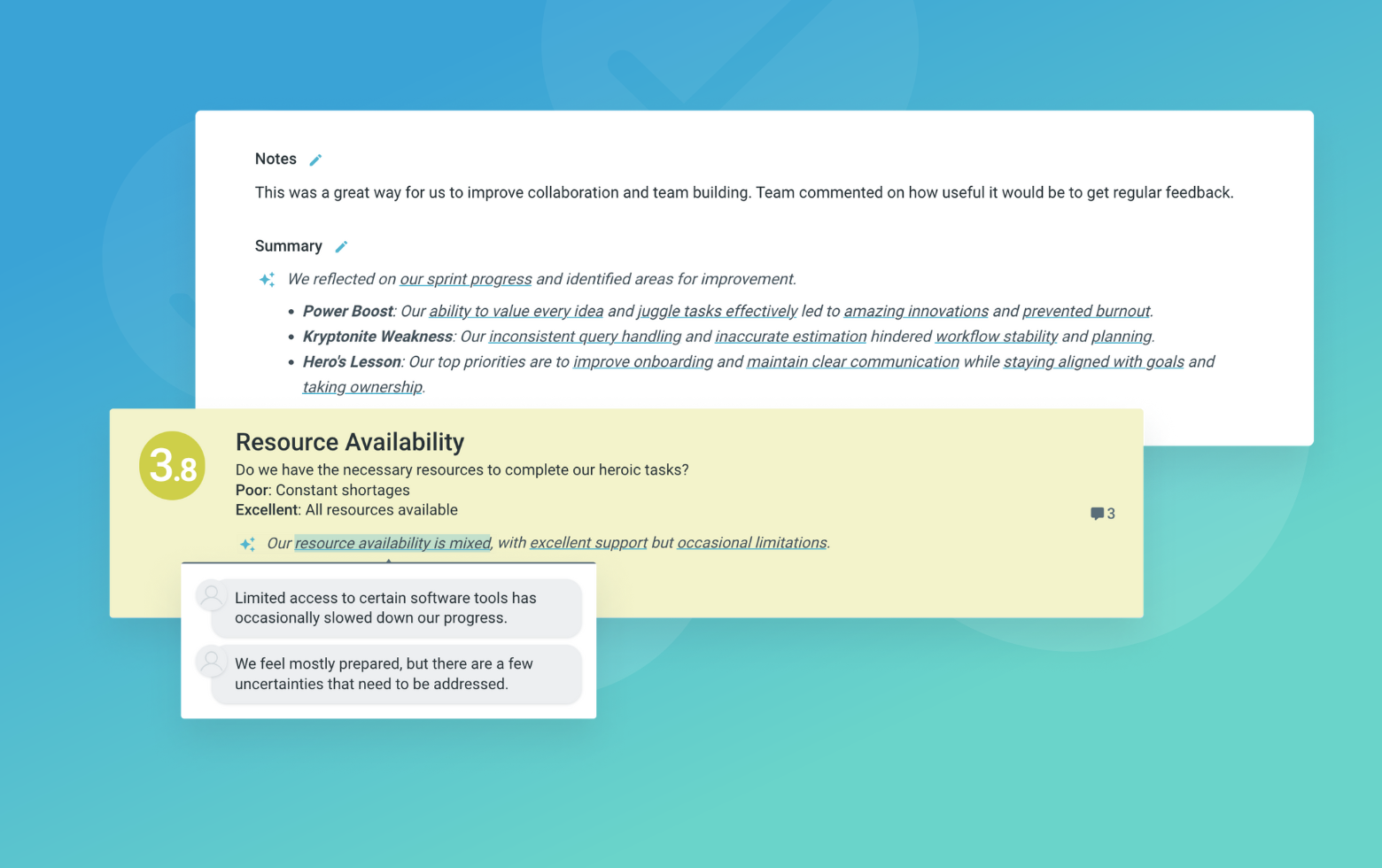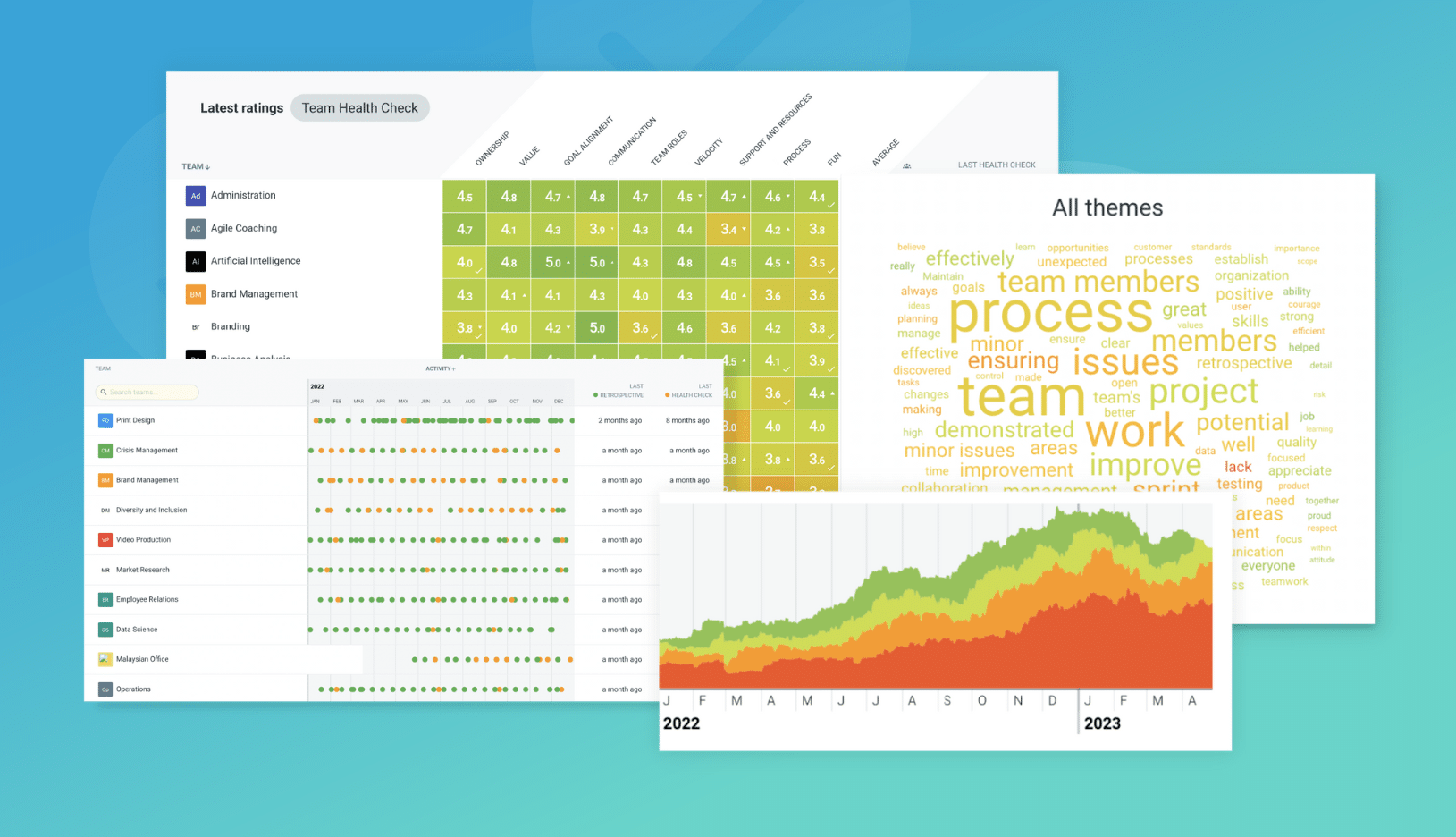What is the What, So What, Now What retrospective?
If Dr Spock was to conduct a retrospective, it’s likely he’d choose the What? So what? Now what? template.
Designed to bring a neutral pragmatism to the review of a sprint, this retrospective format helps your team suspend emotion and side-step bias in order to create a safely objective space to conduct your retro.
That objectivity doesn’t come at the cost of time as there’s no beating around the bush with this retrospective. Its format helps your team succinctly define what happened during your last sprint (What?), the consequences of those happenings (So what?), and shape logical next steps (Now what?).
This is a great format if you are looking for a way to liberate your team from pre-existing bias or groupthink. What happened isn’t categorised as either good or bad – just a fact!
The What, So What, Now What retrospective format
What?
How would you describe the situation? What happened? What was observed? What did you do to contribute? What was predicted? What was unpredicted?
So What?
How does this affect us? What value was delivered? What was learnt?
Now What?
What do we need to do to move forward? What can be repeated? What is to be avoided?

Suggested icebreaker questions for the What, So What, Now What retrospective
- If you were a Star Trek character, who would you be and why?
- What’s more important: the what, the why or the how?
- Now what? Name a time you found yourself at a metaphorical crossroad. What did you do next?
Retro Rehearsal
Invite your team to rehearse the retro referencing one of the crimes in this video.
For example, what happened? What were the ramifications? So what should happen next?
Ideas and tips for your What? So What? Now What? retrospectives
- Make brainstorming anonymous to allow people to feel safe when contributing their thoughts. People will feel more engaged when they feel like they can air out what they need to.
- Rotate your scrum master- allow a new voice to drive the retrospective.
- Experiment with the retro template to make it your own (add “Then what?” to help inform future planning).
- Try to encourage ideas in each section. Even if your team hasn’t achieved anything. Having an idea regarding what needs to be achieved to complete the overall goal will undoubtedly be useful.
- Another way of combating groupthink and bias is to run the retro asynchronously. Share the template a couple of days before the meeting so people have time to think and pre-populate the columns.
- Why not use a ROTI to checkout – gauge how valuable the team perceived the meeting to be.
How to run a What? So What? Now What? retrospective in TeamRetro
Start Your Session in a Click
Log into TeamRetro and choose your template. Customise questions and the workflow to create your perfect retro for your team.
Create Your Team Easily – No Separate Accounts Needed
Brainstorm Individually – Free From Bias
Smart Grouping for Faster Insights
Fair, Flexible, and Fast Voting
Engage, React, and Capture Key Insights
Walk your team through ideas one by one with Presentation Mode. Stay in sync, spark real-time discussions, and capture feedback with comments, live reactions, and polls—all in one place.
Turn Ideas Into Action
Propose next steps with team buy-in, get AI-powered action suggestions, and keep everything in one place. Committed actions sync to your personal dashboard and integrate with your workflow tools—keeping you on track.
Save, Share, and Stay on Track
Get quick AI-powered summaries, add facilitator notes, and store retrospectives in your library for easy access. Schedule your next session and track published actions to keep your team accountable at the next retro.
Turn Team Data into Actionable Insights
Uncover trends, common themes, and key engagement metrics at a glance. Track sentiment shifts, analyze conversations, and monitor completed actions to drive continuous improvement.
